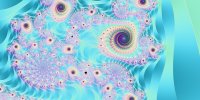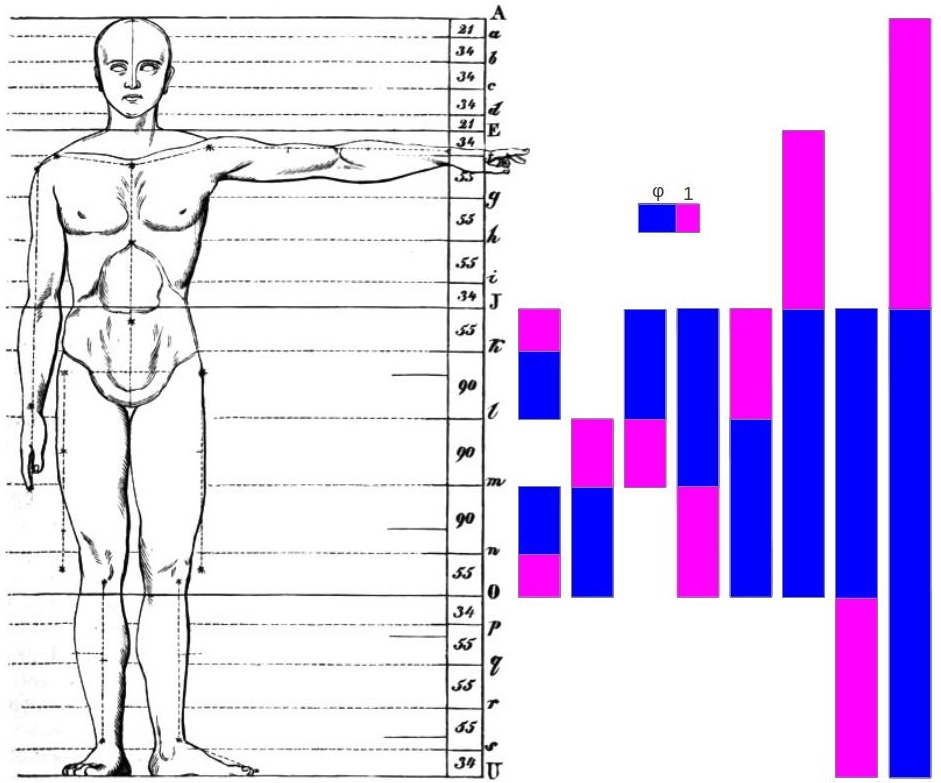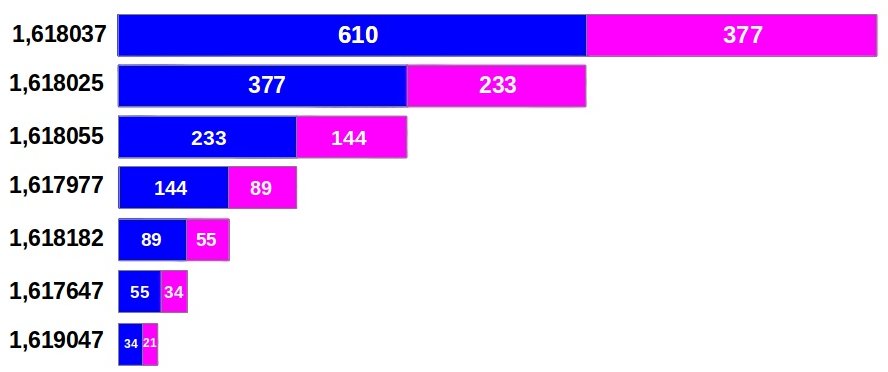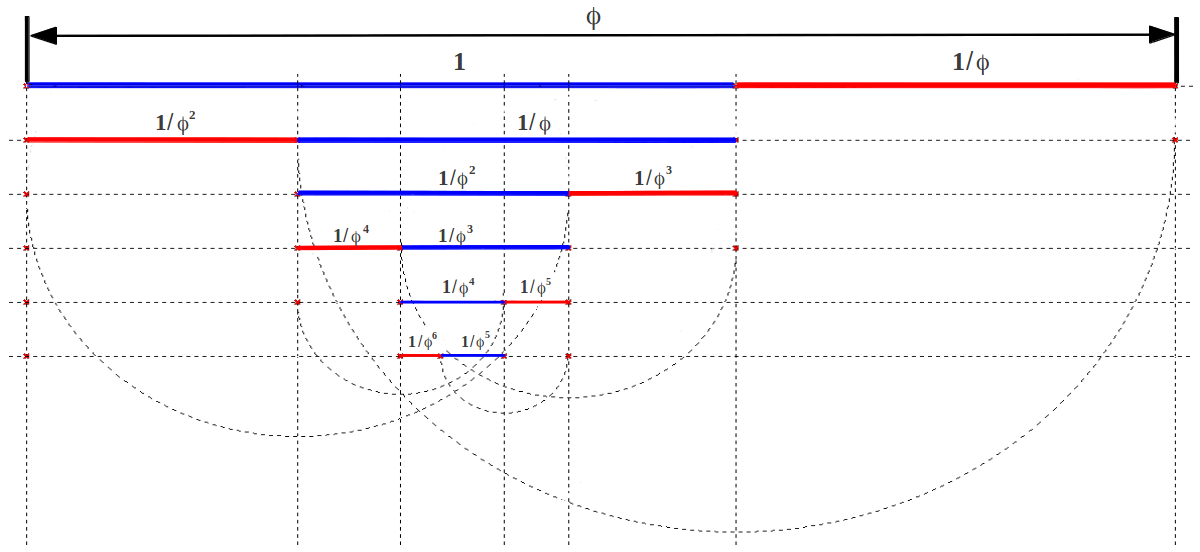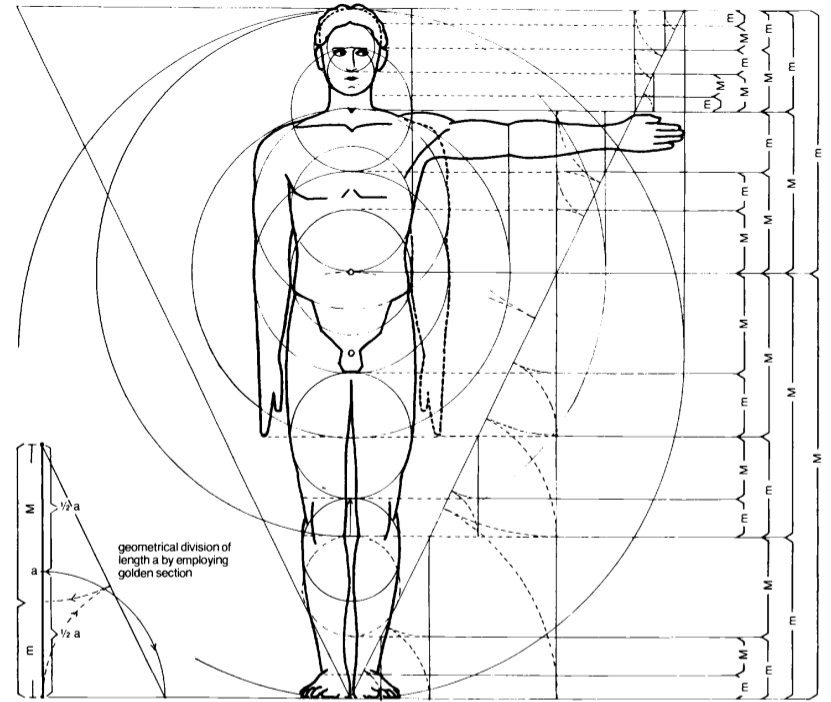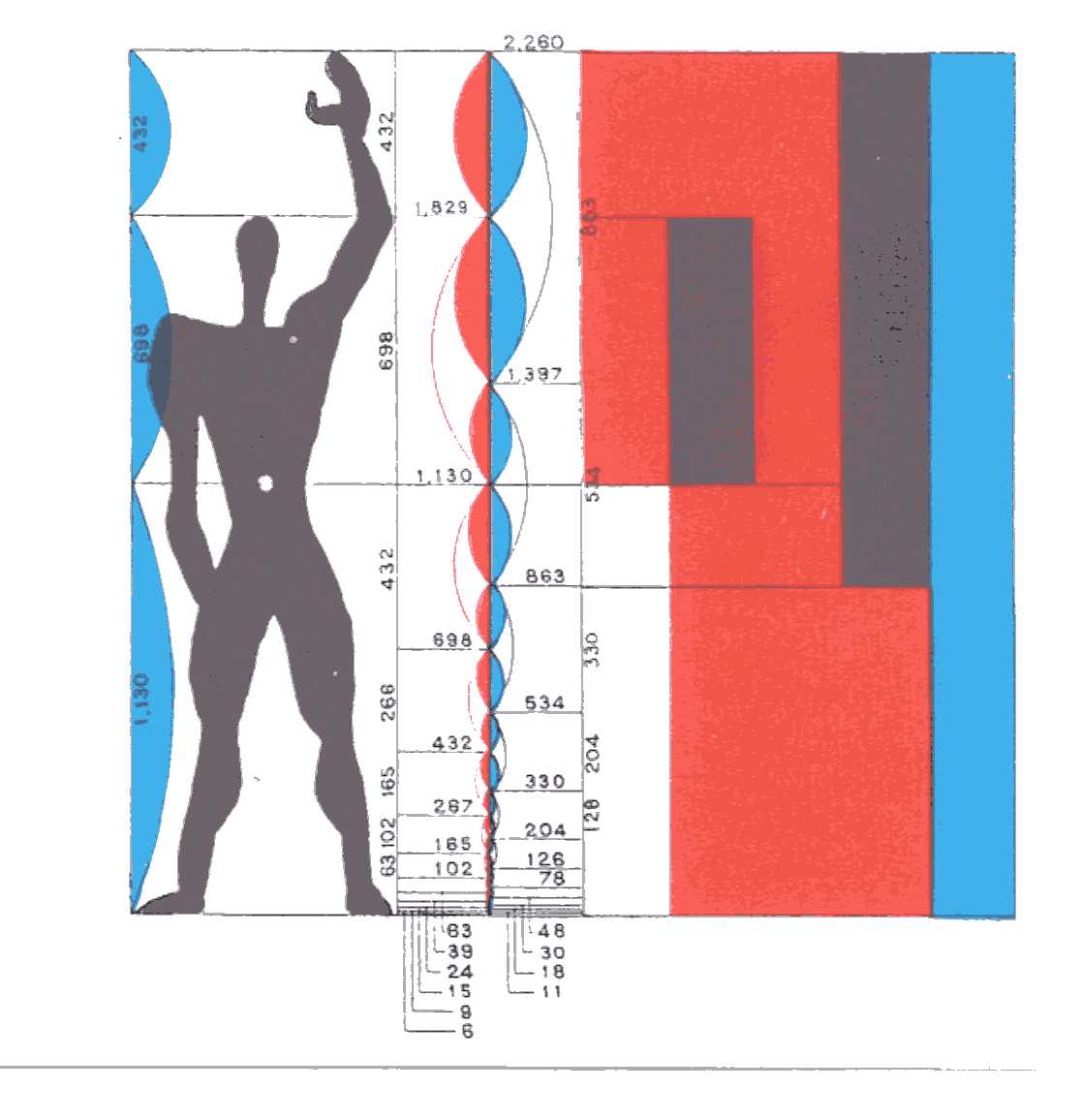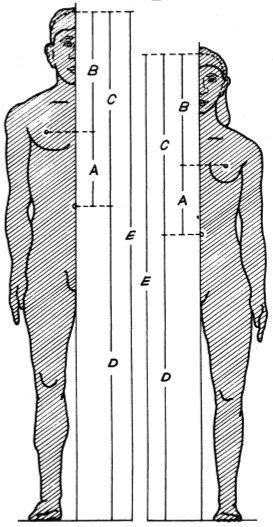I love your proposal JGeropoulas . The word Spirit and Spiral are related...
Spirit
Origin:
"Loan (13th century) from the Latin spiritus 'soplo', 'aire', 'espíritu', derived from spirare 'soplar', 'respirar'. From the etymological family of espirar (V.).spiral and spirit are very similar".
Attached is material on the proportion of gold in the human body. Obviously nothing escapes that proportion. It is the mathematics of life.
5 ^ .5 * .5 + .5 = Φ

www.sacred-geometry.es
Phi in the human body
1.- Introduction
Marcus Vitruvius Pollio, Roman architect (c. 25 B.C.), remarked a similarity between the human body and a perfect building: "Nature has designed the human body so that its members are duly proportioned to the frame as a whole." He inscribed the human body into a circle and a square, the two figures considered images of perfection. It is widely accepted that the proportions in the human body follow the Golden Ratio. In this article we will review some studies on the subject. We will show the nineteenth century findings of the Golden Ratio in the human body by Adolf Seizing, actually approximated by a Fibonacci sequence of measures. Then we will examine the Golden proportions of the human body proposed by architects Erns Neufert and Le Corbusier in the twentieth century. Finally we will show how a common study with a german and an indian population samples confirmed the presence of the Golden Ratio in some proportions of the human body.

2.- Golden proportions in the human body found by Adolf Zeising
Adolf Zeising's main interests, back in the nineteenth century, were mathematics and philosophy. But after having retired he began his researches on proportions in nature and art. In the field of botany, he discovered the Golden Ratio in the arrangement of branches along the stem of plants, and of veins in leaves. From this starting point he extended his researches to the skeletons of animals and the branchings of their veins and nerves, to the proportions of chemical compounds and the geometry of crystals, etc., and finally to human and artistic proportions. The title of his first publication in 1854 declares his program:
New theory of the proportions of the human body, developed from a basic morphological law which stayed hiherto unknown, and which permeates the whole nature and art, accompanied by a complete summary of the prevailing systems [1]
. That universal law was, in efect, the Golden Ratio. There he presents his own proportional analyses of the human body (Figure 1).
|
| Figure 1: Golden proportions in the human body found by Zeising [1]. |
Zeising divides the total height of a man's body into four principal zones: top of head to shoulder, shoulder to navel, navel to knee, and knee to base of foot. Each zone is further subdivided into five segments, which are arranged symmetrically within each zone: either following the pattern ABBBA or the pattern ABABA, but always summing up 2A+3B. By the way, the 3/2 proportion in each zone is a Perfect Fifth in the equal temperament musical scale. Is music involved in the design of our own body?
On the right of Figure 1 you can see the Golden proportions present in each of the segments, and between them, at different scales.
Zeising's proportions of the human body are a beautiful example of how Nature closely approximates the Golden Ratio by means of a Fibonacci sequence of measures. Zeising erroneusly substitutes 90 for 89 in his measures, but we have used the exact value in the following calculations. The Fibonacci numbers present in his scheme, explicitly (green) or implicitly as grand totals (magenta), are the following:
Grouping consecutively each pair of adjacent measures one obtains an iterated division of the big segment (987) into consecutive Fibonacci numbers that closely approximate the Golden Ratio (Figure 2a). This reminds us the power of the
Golden Ratio for consecutively dividing a segment with simple additions and substractions after the first split (Figure 2b). This sequence of Golden Ratio divisions also reminds us of the
fractal nature behind the design of our body, because the same Golden proportion is repeated at all scales.
|
| (a) |
|
| (b) |
| Figure 2: Iterated division of a segment according to (a) the numbers in the Fibonacci sequence and (b) the Golden Ratio. |
3.- The Golden proportions proposed by architects Neufert and Le Corbusier
In the twentieth century the architect Erns Neufert (1900-1986) propagated the Golden Ratio as the architectural principle of proportion in the human body. Neufert did not strictly follow Zeising's human Fibonacci proportions, but introduces the exact Golden Ratio instead [2] (Figure 3). For him, the Golden section also provides the primary link between all harmonies in architecture.
|
| Figure 3: Golden Ratio proportions of the human body after Ernst Neufert [2]. |
There is another great system of body proportions of the 20th century known as the Modulor, proposed by Le Corbusier (1887-1965). In his manifesto
Vers une architecture, he presents the Golden Ratio as a natural rhythm, inborn to every human organism. For details on the historical origin and developement of Modulor I and II systems you can examine the excellent summary by architect Manel Franco [3]. Figure 3 shows the essential proportions proposed by Le Corbusier for the human body:
| |
| | |
| Figure 3: Simple sketch and main Golden proportions in the human body proposed by Le Corbusier [3]. | |
In his final version, the Modulor II system proposes two Golden progressions of measures for the human body (Figure 4a). Returning to the style of Zeising, these progressions are actually two Fibonacci sequences of measures (Figure 4b). That is to say, each measure is obtained by the sum of the two preceding ones. Therefore, the ratio of any pair of consecutive values in these progressions closely approximates the Golden Ratio.
| |
| (a) Golden proportions in the human body proposed in Le Corbusier's Modulor II. | (b) Detail of the red and blue progressions (in mm) in Modulor II. The ones in italic slightly deviate (1mm) from an exact Fibonacci sequence |
| Figure 4 | |
4.- A field study
T. Antony Davis, from the Indian Statistical Institute (India) and Rudolf Altevogt, from the Zoologisches Institut der Universitat (Germany) conducted a study where they measured 207 german students and 252 youg men from Calcutta [4]. The measures taken A, B, C, D and E are shown in Figure 5a. In their results, they were able to confirm that the total height of the body and the height from the toes to the navel are in Golden Ratio (ratios D/C and E/D). Figure 5b summarizes their main results. They obtained the almost perfect value of 1.618 in the German sample (this value held for both girls and boys of similar ages) and the slightly different average value 1.615 in the Indian sample.
| |
| (a) The measures taken in the study [4] | (b) Resulting average ratios, classified by population groups [4]. |
| Figure 5 | |
5.- References
[1] Zeising, Adolf:
New theory of the proportions of the human body, developed from a basic morphological law which stayed hiherto unknown, and which permeates the whole nature and art, accompanied by a complete summary of the prevailing systems. (In German).
[2] Neufert, Ernst:
Architects Data.
[3] Franco, Manel:
El Modulor de Le Corbusier (1943-54)
[4] T. Antony Davis and Rudolf Altevogt, "
Golden Mean of the Human Body".
I'm thinking about the molecules in the human body that absorb light. See here:
EONutrition ( today I discovered this topic)
Breo said: "Yes. And I found an interesting article The Secret of the Fibonacci Sequence in the Trees of a young Aidan, who won a natural science award at the age of 13, because he observed that the leaves of trees grow in fibonacci spirals, called phyllotaxis and wondered why.
I knew that branches and leaves collected sunlight for photosynthesis, so my next experiments investigated whether the Fibonacci pattern helped. I needed a way to measure and compare the amount of sunlight captured by the pattern. I came up with the idea of being able to copy the pattern of branches and leaves with solar panels and compare it to another pattern.
After building a model and then a tree-shaped solar panel, he got amazing results:
Fibonacci's tree design worked better than the flat panel model. The tree design generated 20% more electricity and collected 2 1/2 hours more sunlight during the day. But the most interesting results were in December, when the Sun was at its lowest point in the sky. The tree design generated 50% more electricity, and the time it took to collect sunlight was up to 50% longer!
He concluded that the Fibonacci pattern helps trees track the Sun moving in the sky and collect as much sunlight as possible even in the thickest forest".
We have the whole symbolic part to explore as well.
Here I found something from a Cas session: "The spiral serves to translate the message by slowing the wave and focusing the energy of thought-wave transfers. It uses/transduces electromagnetic waves in the conduit, by breaking down the signal of the universal intention language into phonetic profile language. This is for the need of multiple users" (they were talking about Stonehenge).
The subject of twists also comes to mind:
Quees.la: Diccionario online de definiciones conceptos y significados.

diccionarioactual.com
"The term spiral has its origin in Latin. It derives from spiralis, spirale which means helically. This adjective is formed with the Latin suffix -alis that indicates relation or belonging added to the root of the noun spira, spirae whose meaning is spiral, tirabuzón, rosca or knot of snake, withdrawal. This word is in turn, a loan from the Greek σπεῖρα (pr.speira) which means curl, revolt, circumvolution, which originates in the Indo-European root *sper-3 (turn, return).
The etymological concept of this term can then be considered to be that which belongs to the spiral form, that which belongs to the spiral, curl or fold".
Translated with
www.DeepL.com/Translator
Me encanta tu propuesta JGeropoulas . La palabra Espíritu y Espiral tienen relación...
Espíritu
Origen:
"Préstamo (s. XIII) del latín spiritus ‘soplo’, ‘aire’, ‘espíritu’, derivado de spirare ‘soplar’, ‘respirar’. De la familia etimológica de espirar (V.).spiral y espíritu son muy similares"
Adjunto material sobre la proporción dorada en el cuerpo humano. Evidentemente nada escapa de esa proporción. Es la matemática de la vida.
5 ^ .5 * .5 + .5 = Φ

www.sacred-geometry.es
Estoy pensando sobre las moléculas en el cuerpo humano que absorben luz. Ver aquí:
EONutrition ( hoy descubrí este tema)
Breo dijo: "Sí. Y encontré un interesante artículo El secreto de la secuencia de Fibonacci en los árboles de un joven Aidan, quien ganó a los 13 años un premio de ciencias naturales, porque observó que las hojas de los árboles crecen en espirales de fibonacci, llamadas phyllotaxis y se preguntaban por qué.
Sabía que las ramas y las hojas recogían luz solar para la fotosíntesis, por lo que mis próximos experimentos investigaron si el patrón de Fibonacci ayudaba. Necesitaba una forma de medir y comparar la cantidad de luz solar captada por el patrón. Se me ocurrió la idea de poder copiar el patrón de ramas y hojas con paneles solares y compararlo con otro patrón.
Después de construir un modelo y luego un panel solar en forma de árbol, obtuvo resultados sorprendentes:
El diseño del árbol de Fibonacci funcionó mejor que el modelo de panel plano. El diseño del árbol generó un 20% más de electricidad y recolectó 2 1/2 horas más de luz solar durante el día. Pero los resultados más interesantes fueron en diciembre, cuando el Sol estaba en su punto más bajo en el cielo. ¡El diseño del árbol generó un 50% más de electricidad, y el tiempo de recolección de la luz solar fue hasta un 50% más largo!
Llegó a la conclusión de que el patrón de Fibonacci ayuda a los árboles a rastrear el Sol moviéndose en el cielo y a recoger la mayor cantidad de luz solar incluso en el bosque más espeso."
Tenemos toda la parte simbólica para explorar también.
Aquí encontré algo de una sesión de los Cas: "La espiral sirve para traducir el mensaje al ralentizar la onda y enfocar la energía de transferencias de ondas de pensamiento. Utiliza/ transduce ondas electromagnéticas el conducto, al descomponer la señal del lenguaje de intención universal, en lenguaje de perfil fonético. Esto es para la necesidad de múltiples usuarios" ( estaban hablando de Stonehenge)
También viene a mi mente el tema de los giros:
Quees.la: Diccionario online de definiciones conceptos y significados.

diccionarioactual.com
"El término espiral tiene su origen en el latín. Deriva de spiralis, spirale que significa de forma helicoidea. Este adjetivo está formado con el sufijo latino –alis que señala relación o pertenencia añadido a la raíz del sustantivo spira, spirae cuyo significado es espira, tirabuzón, rosca o nudo de serpiente, repliegue. Este vocablo es a su vez, un préstamo del griego σπεῖρα (pr.speira) que significa rizo, revuelta, circunvolución, que se origina en la raíz indoeuropea *sper-3 (girar, volver).
Puede considerarse, entonces, como el concepto etimológico de este término lo que pertenece a la forma de espira, lo perteneciente a la espira, rizo o repliegue"

